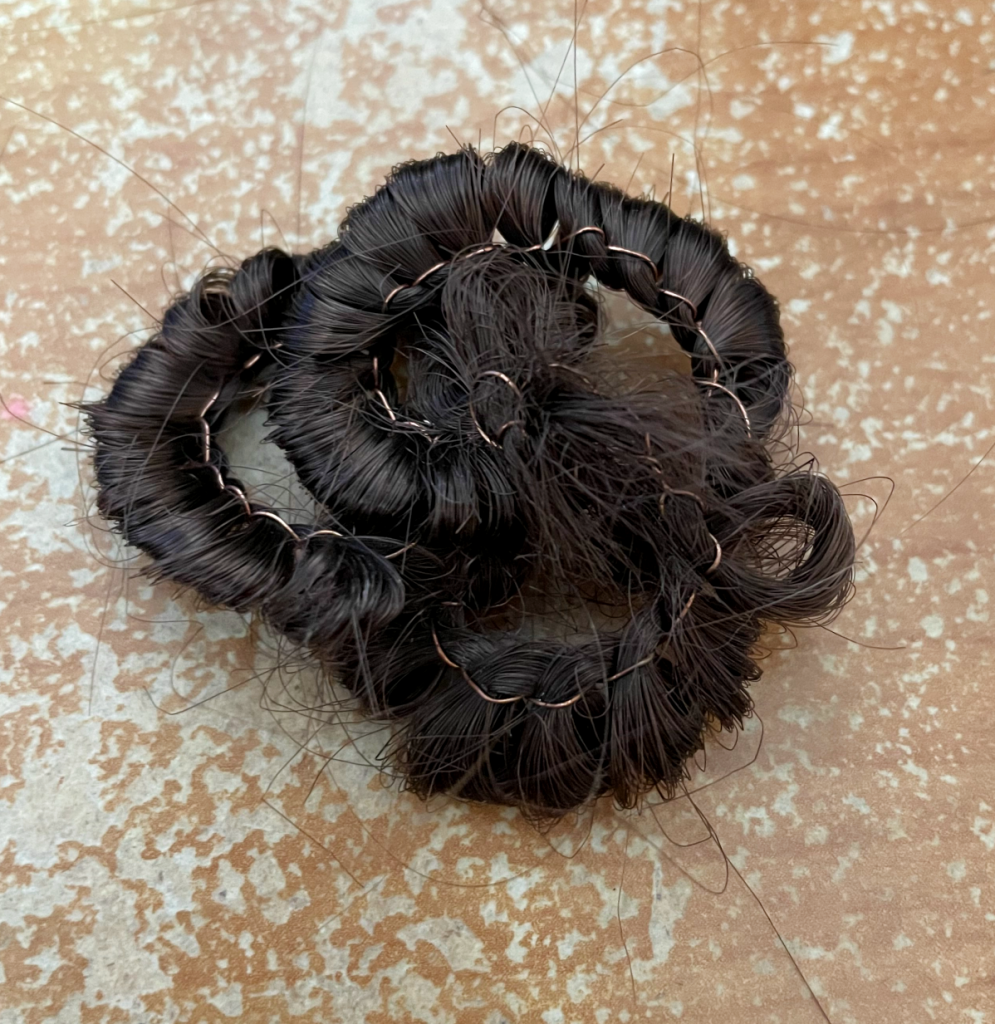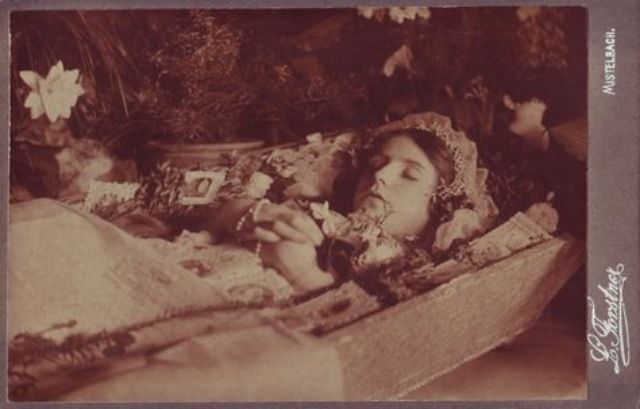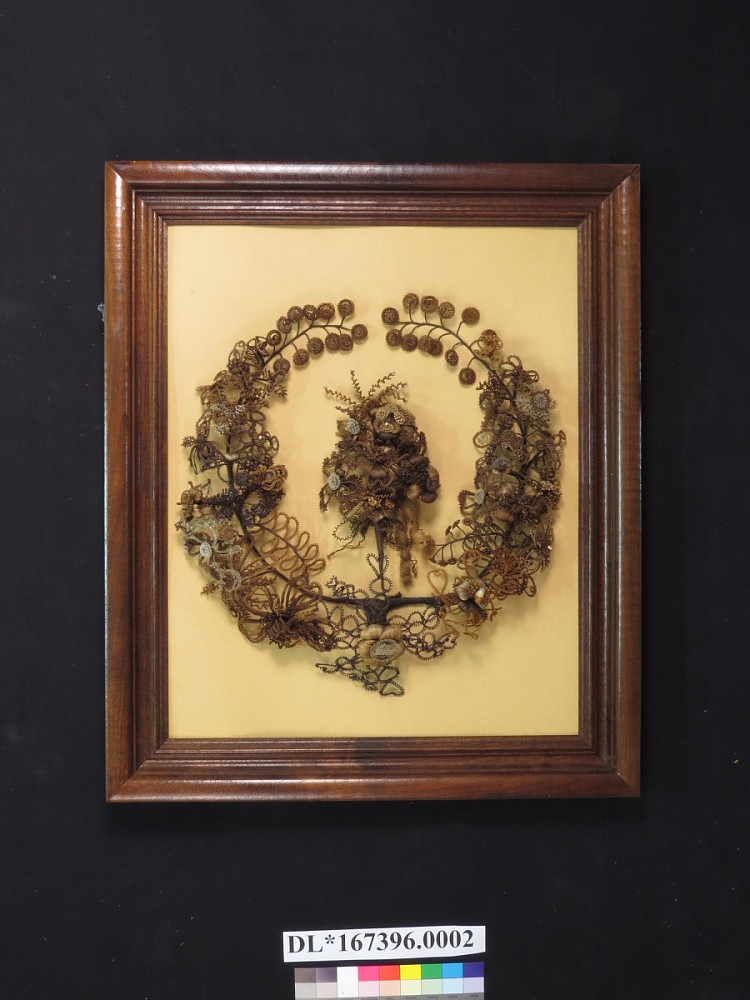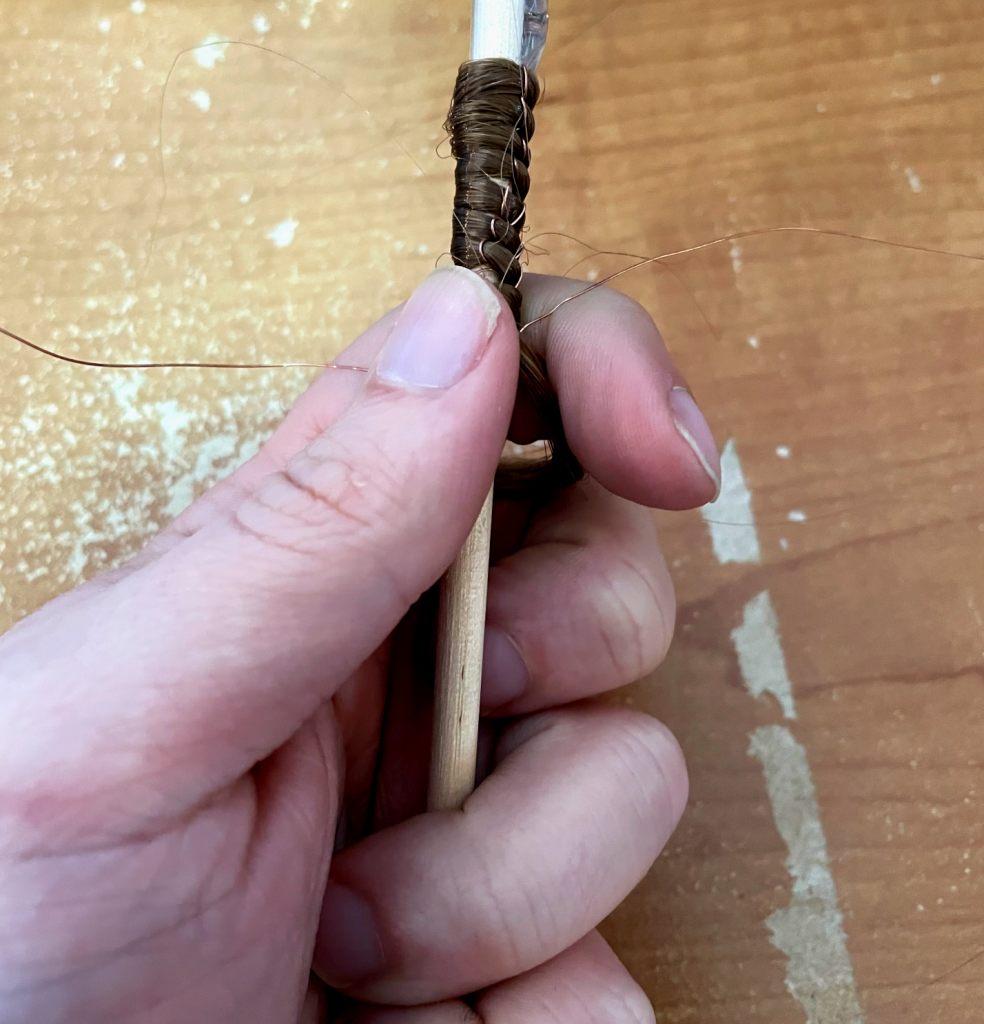By: Tim Betz, Executive Director, Morgan Log House

One of the historic trades and crafts that we have recently explored in a History Happy Hour and as part of some special tours on site is the nineteenth-century tradition of hair wreaths and hair art.
Hair wreaths are part of a series of traditions connected to mourning. Mourning, of course, is ancient and has been going on since people have died. When modern people think of mourning, we often think of the complex traditions of wearing black, covering mirrors, reorganizing one’s social calendar, and more. These were tied to a specific time and place: in the United States and Great Britain in the mid-nineteenth century. In England, this time was marked by the death of Prince Albert, Queen Victoria’s husband, in 1861 and her subsequent public mourning. In the United States, this period of time was the American Civil War.
Death photography and hair wreaths were part of nineteenth-century mourning. Both of these material artifacts seem very strange and macabre to us today. However, both can tell us a lot about what it meant to be human in the nineteenth century.
With the advent of photography in the 1830s, the camera took the world by storm. Shortly afterward, people began having the recently deceased bodies of their dead loved ones photographed. Sometimes this would be in the coffin, sometimes the bodies would be surrounded by loved ones, sometimes they would be propped up in a chair and made to look as lifelike as possible. Photographs of loved ones were kept and cherished. For many, they were the only visual remembrance of a loved one who had passed away. At a time of high infant mortality, death photography was a way to remember a child who had died in infancy. While macabre and unseemly to many modern viewers, there is something beautiful in the simplicity of the death photograph as a tool for remembering the face of the dearly departed, which, in a world with limited access to photography, would soon fade from memory.

The other material tradition is the one that this blog is centered around: hair wreaths. Hair was given as a memento since antiquity, and would often be kept in jewelry or in a locket. In the mid-nineteenth century, the art of hair work entered the mourning world. Mourners would collect the hair of loved ones, and weave it with wires to create flowers and other shapes. Professional hair workers advertised their services in newspapers and in the Sears catalog: but many chose to do their own hair work themselves. Patterns were published in books and as part of housekeeping magazines. Hair is a part of the body that does not decay, and making it into an art piece was a way for people to have a tangible reminder of the person they had lost: to hold their very essence in their hands and to keep it as a personal memento for years to come.

Enter, then, me and hair art. As part of our Makerspace at the Morgan Log House, we have been learning historic trades and crafts and teaching them through tours, workshops, and programs throughout the year, particularly at our Drop-In Workshops for families and our History Happy Hours, for adults. Hair art was a natural thing to learn, and a natural choice for an October History Happy Hour: and so I set to work. The process is both complex and simple, and relies on the regular weaving of hair around a dowel, which is then held into place with two wires. The process, then, involves repetition. The hair used was doll hair, not real hair, but it created a very similar effect.

I found learning by doing the process was deeply enlightening for understanding what hair wreaths are and how they work as a cultural artifact. I had always experienced them as something behind glass: something that was made in the distant past and now preserved in museum collections. A particularly fascinating and amazing thing, of course, but another thing on a shelf nonetheless. However, in learning how to make hair wreaths, I gained a new appreciation for this fascinating art form as a lived experience. The process is deeply personal and involves the careful weaving of hair (or, in my case, doll hair). The hair worker is constantly touching the hair, moving the hair, manipulating the hair, and pressing the hair into the position they want it to be. Tacitly, the hair worker constantly feels the hair moving intimately between their fingers. Putting myself in the place of a mourner, the people who would have actually been making hair wreaths in the home, there is something to be said about the process of making them. The holding of the hair, the moving of the hair, and the weaving of the hair would allow close proximity to the body of a lost loved one. The repetitious, quiet work would allow for contemplation and remembrance. I had always thought of the hair wreath as something static to be looked at: something to be seen. I realize now that the process is the thing: making the hair wreath is an act of mourning and devotion in and of itself, just as keeping a hair wreath was.
For us as modern people, the idea of the hair wreath is something strange, macabre, and shows an “unhealthy” fascination with death. We might imagine the people of the nineteenth century as constantly in mourning and constantly thinking about things that we would rather avoid. We should remember, though, that they lived in a world where they encountered death on a very personal level. In our modern world, the dead are cared for outside of the home, are embalmed, are viewed in a funeral home, and are buried. Death has been made sterile and taken out of the home and people in the modern world have become increasingly separate from the reality of death. In the nineteenth century, ideas of embalming, the funeral home, and death professionals were new, with embalming only becoming prominent after the Civil War. Many loved ones in the nineteenth century cared for and prepared their dead for burial in the home. Viewings would take place in the parlor. As a result, death was part of the home and part of life, something to be considered, interacted with, and contextualized. Mourning art and material culture helped in that. Making hair wreaths and thinking about this has taught me one thing: the people of the nineteenth century might have dealt with death in a very personal way and may have dealt with it very publicly and materially, but they believed it to be part of life. Something that was tied deeply to human experience. It was human to mourn and die, just as it was to live and enjoy life. To keep the hair of a loved one was to be reminded of time spent in life together, and also a reminder of one’s own eventual death. In a way, the people of the nineteenth century weren’t obsessed with death: they were entranced by life.
